Functional Movement Screen For Chronic or Reoccurring injured and Pain.
If you have Muscle Imbalances and Restrictions in Movement, you are causing micro trauma to your musculoskeletal system. Overtime this will cause your body to Breaking down Prematurely, Resulting in Reduced Performance, and Setting Yourself Up For Injuries.
Proper biomechanics can reduce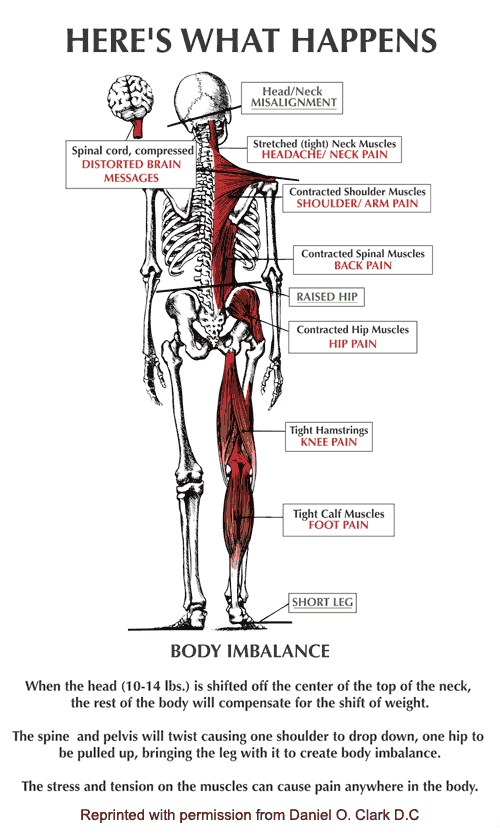 pain and the likelihood of injuries
pain and the likelihood of injuries
The most important piece of equipment is your body, but how much time do you spend improving your muscle imbalances, stiffness or biomechanical flaws.
How many times have you heard of an athlete’s back going out just before the big game or just before a tournament were all the college scouts will be attending.Sports Biomechanics

Muscle imbalances will likely cause premature breakdown of your structure.
We see a lot of this in runners. For example, we see runners who can run 5 mile or so pain free. Then they increase the miles, lets say to 10 miles. Now suddenly at 10 miles they start to get all different kinds of pain. Many times the increase in miles causes the imbalances to show up.
Tendinitis, Knee pain, Plantar Fasciitis, Back Pain.
Why are you suffering from these problems? Traditional treatment is aimed at the pain only. The Functional Performance Screen looks for the CAUSE of the Pain.
Do you suffer from chronic or reoccurring injuries?
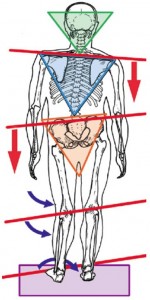 If you have muscle imbalances, restrictions, or muscular weakness and they are not found and corrected, the pain or injury will likely return.
If you have muscle imbalances, restrictions, or muscular weakness and they are not found and corrected, the pain or injury will likely return.
The cure for knee pain is NOT knee replacement.
The left foot turns in, the left knee then also turns in, now the left hip will drop, now your back will lean to the left to compensate for the dropped hip.
Can this cause Knee Pain? Hip Pain? Back Pain? Yes.
If this person on the left goes for a simple run, what will do you think will happen?
The injury will likely return and result in more pain.
Call now to schedule your Functional Performance Screen 480-633-6837.
Only $75.00 for the screen and exercise and treatment recommendations.
The Functional Performance Screen

1) Foot / Ankle / Arch Mobility Screen and Scan
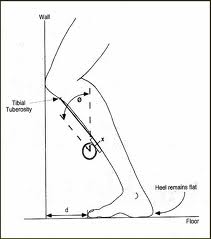
Test the height of the medial arch
• 80% of the population pronate (flat foot) with one or both feet
• 10% of the population supinate (high arches) with one or both feet
When the Q-angle becomes excessive (very approximately more than 15 degrees in males and 20 degrees in females), the resulting actions are increased femoral anteversion, external tibial torsion and foot pronation. The resulting malalignment will increase forces to an unusual extent causing lateral patellar subluxation. The whole point of all this gibberish is, knee injury can ensue, causing ACL and or meniscus damage.
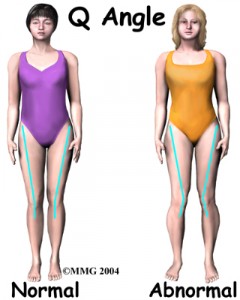
3) Gray Cook’s Functional Movement Screen (From Gray Cook)
The Functional Movement Screen, which was developed by Gray Cook, P.T., is a series of seven basic movements are grades your ability to perform them safely and effectively. Through this screening you will know where your weak links are. Once your weak links and muscle imbalances are identified, a specific corrective exercise program can be given to you.
The Functional Movement includes:
Deep Squat Function Movement Screen
Purpose – The Deep Squat is used to assess bilateral, symmetrical, mobility of the hips, knees, and ankles. The dowel held overhead assesses bilateral, symmetrical mobility of the shoulders as well as the thoracic spine.
The ability to perform the Deep Squat requires closed-kinetic chain dorsi-flexion of the ankles, flexion of the knees and hips, extension of the thoracic spine, as well as flexion and abduction of the shoulders.
Poor performance of this test can be the result of several factors. Limited mobility in the upper torso can be attributed to poor glenohumeral and/or thoracic spine mobility. Limited mobility in the lower extremity including poor closed-kinetic chain dorsi-flexion of the ankle and/or poor flexion of the hip may also cause poor test performance
Hurdle Step Functional Movement Screen
Purpose – The Hurdle Step is used to assess bilateral mobility and stability of the hips, knees, and ankles.
The ability to perform the Hurdle Step test requires both stance leg stability of the ankle, knee, and hip as well as maximal closed-kinetic chain extension of the hip. The Hurdle Step also requires leg open-kinetic chain dorsi-flexion of the ankle and flexion of the knee and hip. The athlete must also display adequate single leg stance balance during this test.
Poor performance of this test can be the result of several factors. It may simply be due to poor stability of the stance leg or poor mobility of the step leg. However, imposing maximal hip flexion of one leg while maintaining apparent hip extension of the opposite leg requires the athlete to demonstrate relative, asymmetric hip mobility.
In Line Lunge Movement Screen
Purpose – The In-Line Lunge is used to assess bilateral mobility and stability, as well as ankle and knee stability.
The ability to perform the In-Line Lunge test requires stance leg stability of the ankle, knee, and hip as well as closed-kinetic chain hip abduction. The In-Line Lunge also requires step leg mobility of the hip adduction and ankle dorsi-flexion. The athlete must also display adequate balance during this test.
Poor performance of this test can be the result of several factors. First of which is inadequate hip mobility of either the stance or step leg. Secondly, the stance leg knee or ankle may not have the required stability as the lunge is performed. Thirdly, an imbalance may be present between adductor weakness and abductor tightness about one or more hips. Finally, tightness of the rectus femoris on the stance leg may be the cause for poor performance.
Shoulder Mobility Screen
Purpose – The Shoulder Mobility test is used to assess bilateral shoulder range of motion combining internal rotation with adduction and external rotation with abduction
The ability to perform the Shoulder Mobility test requires shoulder mobility in a combination of motions including abduction/external rotation and adduction/internal rotation.
Poor performance of this test can be the result of several factors. One of which is the widely accepted factor that increased external rotation is gained at the expense of internal rotation in overhead throwing athletes. There can also be postural changes of forward or rounded shoulders caused by excessive development and shortening of the pectoralis minor and/or latissimus dorsi muscles. Finally a scapulothoracic dysfunction may be present resulting in decreased glenohumeral mobility.
Active Straight Leg Raise Movement Screen
Purpose – The Active Straight Leg Raise test is used to assess active hamstring and gastro/soleus flexibility, while maintaining a stable pelvis..

The ability to perform the Active Straight Leg Raise test requires functional hamstring flexibility. This flexibility is the true flexibility an athlete has available during training and competition, as opposed to passive flexibility, which is most often assessed. The athlete is also required to demonstrate adequate passive iliopsoas flexibility of the opposite leg as well as lower abdominal stability.
Poor performance during this test can be the result of several factors. First, the athlete may have poor functional hamstring flexibility. Secondly, inadequate passive mobility of the opposite hip may be the result of iliopsoas tightness associated with an anterior tilted pelvis. If this limitation is gross, true active hamstring flexibility will not be realized. A combination of both these factors will demonstrate an athlete’s relative bilateral, asymmetric hip mobility. This is similar to the relative hip mobility revealed by the Hurdle Step, however, this test is more specific to the limitations imposed by the muscles of the hamstrings and the iliopsoas.
Trunk Stability Push Up
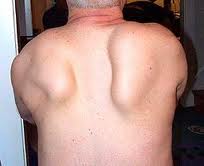
Purpose – The Trunk Stability Push-Up is used to assess trunk stability in the sagittal plane while a symmetrical upper extremity motion is performed.
The ability to perform the Trunk Stability Push-up requires symmetric trunk stability in the sagittal plane during a symmetric upper extremity movement. Many functional activities in sport require the trunk stabilizers to transfer force symmetrically from the upper extremities to the lower extremities and vice versa.
Movements such as rebounding in basketball, overhead blocking in volleyball, or pass blocking in football are common examples of this type of energy transfer. If the trunk does not have adequate stability during these activities, kinetic energy will be dispersed, leading to poor functional performance as well as increased potential for micro-traumatic injury.
Poor performance during this test can be simply attributed to poor symmetric stability of the trunk stabilizers.
Rotational Stability Movement Screen
Purpose – The Rotational Stability test is used to assess multi-planar stability while a combined upper and lower extremity motion is performed.
The ability to perform the Rotational Stability test requires asymmetric trunk stability in both sagittal and transverse planes during asymmetric upper and lower extremity movement. Many functional activities in sport require the trunk stabilizers to transfer force asymmetrically from the lower extremities to the upper extremities and vice versa.
Running and accelerating out of a down stance in track and football are common examples of this type of energy transfer. If the trunk does not have adequate stability during these activities, kinetic energy will be dispersed, leading to poor performance as well as increased potential for micro-traumatic injury.
Poor performance during this test can be simply attributed to poor asymmetric stability of the trunk stabilizers.
Call now for your functional exam. Only $75
480-633-6837